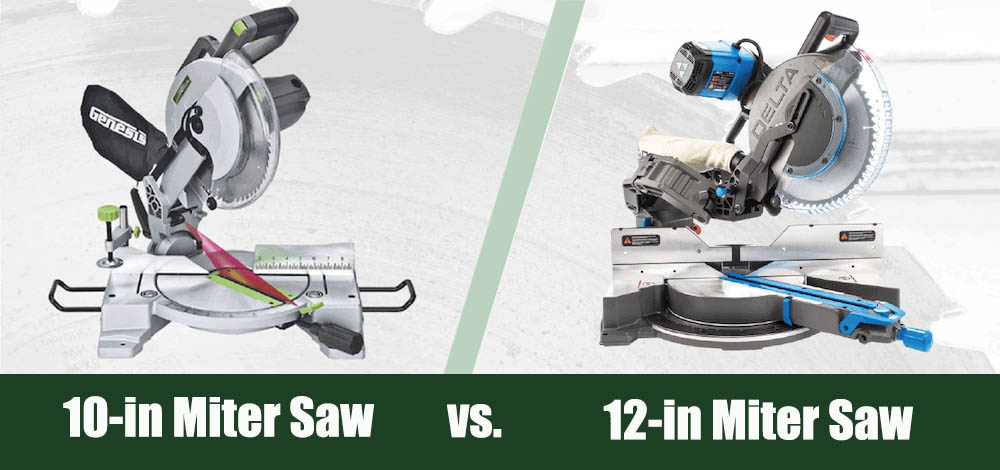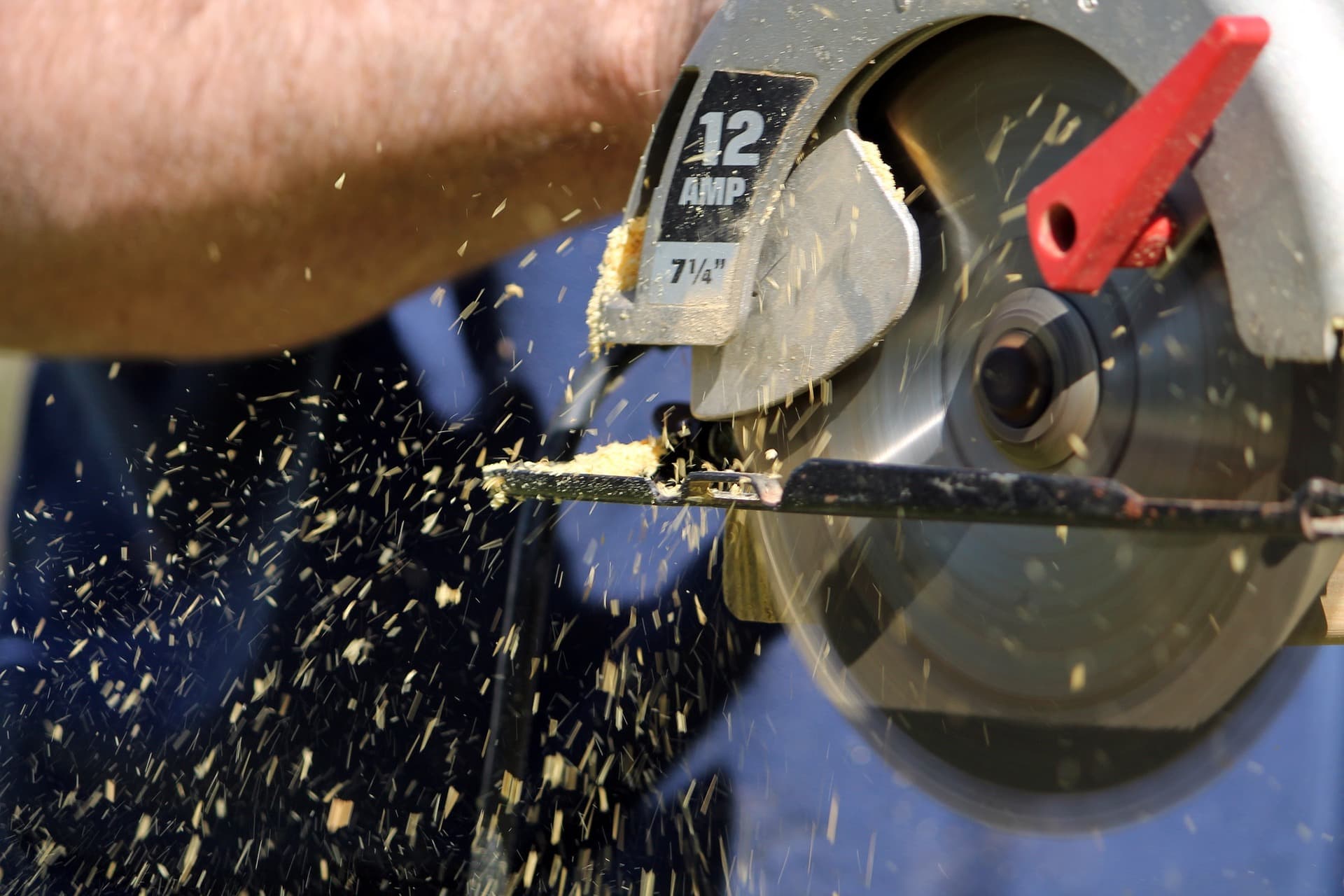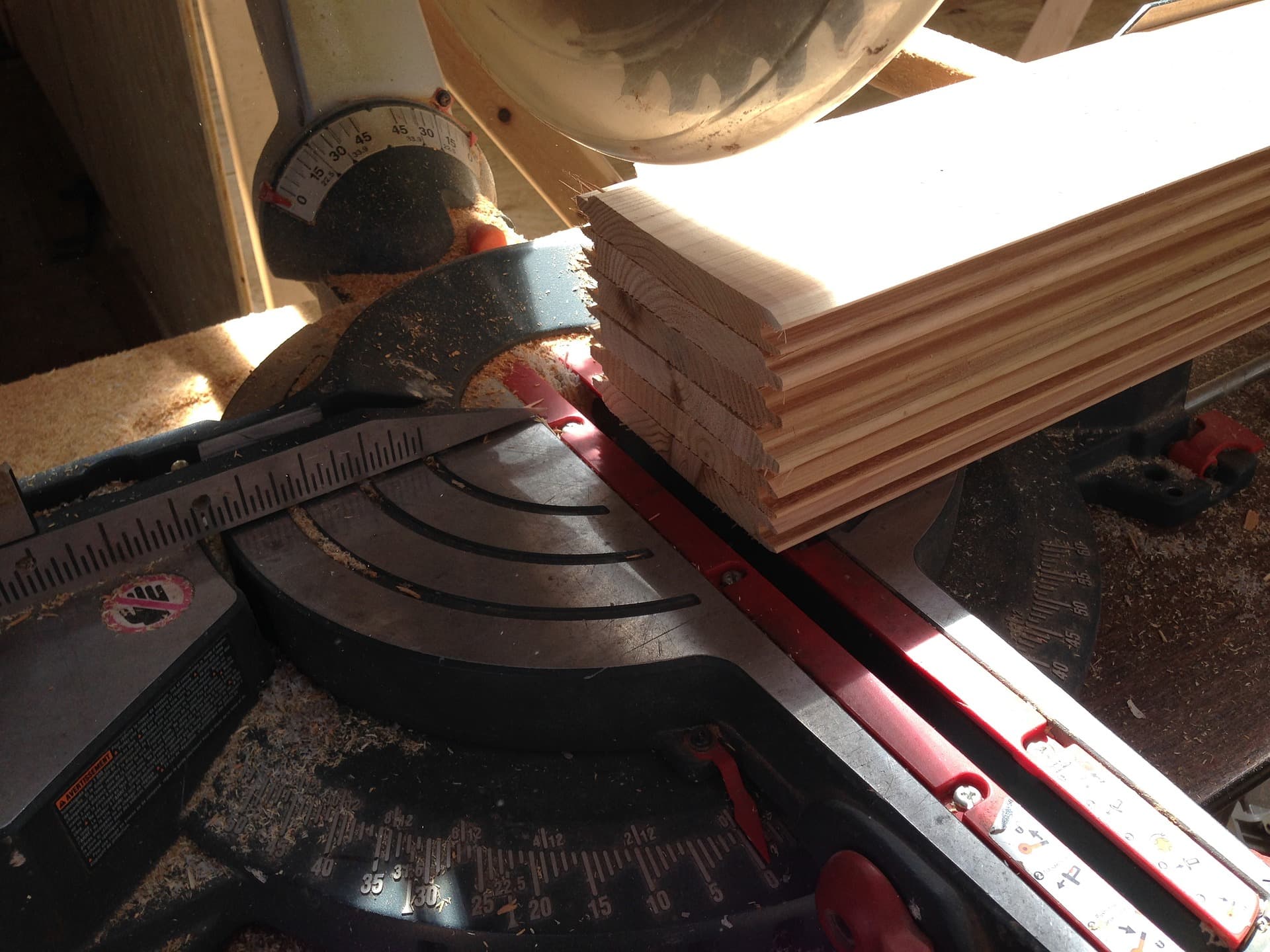10-Inch vs 12-Inch Miter Saw: Which One’s Right for You?
-
Pete Ortiz
- Last updated:

Miter saws come in a range of blade sizes, from as small as 7¼ inches all the way up to 20 inches (and beyond if you’re looking at industrial applications), but the two most common sizes are 10-inch and 12-inch. Do a mere 2 inches really make any difference? Of course, it does. But before you decide which one is for you, take a minute and think about what you want the saw to do for you.
10-inch Miter Saw
The 10-inch miter saw is pretty popular, and with good reason. The 10-inch blade cuts pieces that are up to 6 inches wide, which covers most trim and molding boards. Trim is seldom more than 4 inches, so you’ve got plenty of wiggle room with a 10-inch miter saw.

A 10-inch saw is less expensive. The machine itself is lighter and smaller than a 12-inch version. The blades are also cheaper than their larger counterparts. If that’s not compelling enough for you, the 10-inch blades are easier to find, come in a wider array of choices, and are cheaper to sharpen.
A 10-inch blade will spin faster than a 12-inch blade, resulting in smoother cuts. Equal motors powering the two blades will result in a higher RPM rate on the 10-inch blade, and higher RPMs mean a finer finish. When connecting trim pieces, a smoother cut will mean a snugger joint. In addition, the smaller blade will also generate less wobble, another contributor to smooth cuts.
If a 10-inch saw is so fantastic, why does anyone buy the 12-inch?
- Less expensive
- Lighter and more portable
- Higher blade speed = smoother finish
- Minimal wobbling
- Can’t handle thicker cuts and harder wood
12-inch Miter Saw
True, the 12-inch is a more expensive machine, with more expensive, harder-to-find, smaller-selection blades, plus it’s heavy and unwieldy and makes less precise cuts.
But, the 12-inch can cut wider and thicker boards than its smaller counterpart. If you’re working with heavier wood or larger crown molding pieces, the 12-inch will be a true labor and time saver.

The 12-inch usually comes with a stronger motor, meaning it can power through those wider and thicker boards with less struggle. Since it’s intentionally designed for more heavy-duty cutting, the tools tend to last longer. Knowing they are built to last might help you feel better about the higher upfront price tag.
Can you have your cake and eat it, too? Sort of. You can put your 10-inch blades on your 12-inch saw (assuming the arbor holes are the same size), but you cannot put 12-inch blades on a 10-inch saw. The 12-inch saw gives you greater versatility; with the larger blade, it’s the hefty workhorse, and with the smaller blade, it’s a master of precision.
- More powerful
- Durable
- Versatile
- Can make deeper cuts
- Heavy
- More expensive
- Smaller selection of blades
- Need a 10-inch blade for precision cuts
Conclusion
If money is no object, spring for the 12-inch saw. But if you’re not a millionaire, think carefully about what you expect to do with your miter saw. If you’ve never even thought about needing the extra capacity the 12-inch provides, save your money and get the 10-inch. Don’t buy more tool than you need—buy the right tool for the job.
Related Reads:


